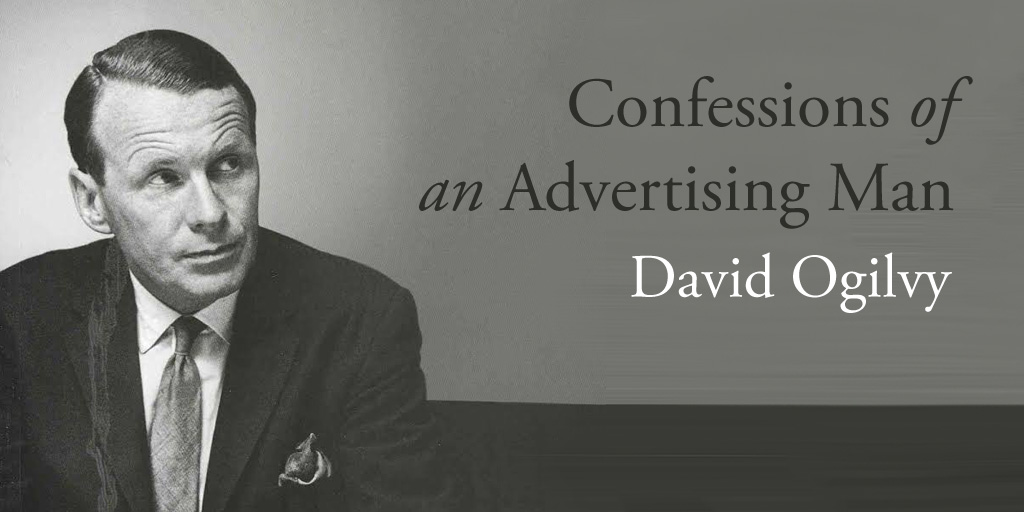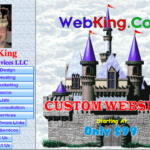“What should I write on my site?”
That’s the question we’ve heard the most after building over 5000 websites.
It’s definitely by far the most important element that goes into a site, yet it gets the least care and attention.
So let’s fix that.
With this simple guide, you’ll be able to produce persuasive, memorable copy for your small business website… even if you hate writing and are starting off with no ideas.

The Key To Know What To Say On A Website
Start with this simple concept:
Each page on your website should focus on a central topic (unique to that page), and then aim to specifically answer all the questions your customers/audience have about that topic.
You are not writing for you. You are writing for them.
So picture “them” in your mind the entire time you are planning and writing your website.
When they (your potential customers) read any page on the site, it should be immediately apparent what problems you solve, how you solve them, and what the next step is.
The About page focuses on your business history — the owners, the origin story, your culture and mission and expertise.
The Contact page focuses on all the ways people can connect with you — your address, phone, email, hours, map, etc.
Each unique service or product gets its own section, and should cover all the things you would talk about with a customer if they were right in front of you (or on the phone).
The only exception is the Home page, which is more like an overview of your business that helps guide people to each specific topic on other pages.
In most cases, you can write the Home page last, after you’ve got all the other pages planned.
So now we know on each page we are going to focus in and cover that topic exhaustively.
Next, we need a structure.
3 Main Elements Of Web Copy
The basic template of a web page is: Headline, Body, Call To Action.
Headline
Each page needs a headline that captures attention and sums up the central topic of that page.
The headline is also a major factor for getting ranked highly on Google.
And it doesn’t have to be creative or showy; most readers are just trying to quickly solve a problem.
There are two basic formats you can use to write great web headlines every time.
1. Topic Benefit + Action/Modifier + Area
Let’s take a fruit grower. Maybe the main benefit is “Fresh Strawberries”.
But on a small business website we want to be as specific about our service area as possible. So now we get “Fresh Strawberries In Winnipeg”. Pretty good, and we could almost leave it there.
But to be even more specific, we are not trying to show people how to grow strawberries, we are trying to sell them fruit. So we could add in “Fresh Strawberries Delivered Direct To Your Door In Winnipeg”.
Fresh Strawberries [Topic Benefit] + Delivered Direct To Your Door [Action/Modifier] + In Winnipeg [Area]
2. Result + Time + Objection
This is a great formula for sales writing. So if your situation is unique and the formula above doesn’t make sense for you, then try this instead.
Let’s take a language tutor. The result would be “Learn Conversational Italian”.
Let’s say it takes most students two months using their system. So the time would be “In 60 Days”.
For the objection, we want to pick one of the main pain points of their audience and say it won’t be an issue. Some people hate using flashcards or having to write out grammar rules. So the objection part could be “Without Flashcards Or Boring Grammar Rules”.
This becomes:
Learn Conversational Italian [Result] + In 60 Days [Time] + Without Flashcards Or Boring Grammar Rules [Objection]
Body
The body makes up the main content of every web page.
Below, we’ll get into specific writing tips that you can use to write your body text.
For a small business, like we already said, you really just want to imagine a conversation with an ideal customer. Cover everything you would say to that customer in person, and do it in a direct and clear way.
One thing to remember about the body is that it’s harder on the eyes to read a web page than it is to read a book or poster.
So you want to make your text easily scannable.
That means the reader will sort of quickly look it up and down before they decide to read it.
There are three simple ways to make sure your text is scannable:
1. Make sure the font is not too small. Just check it on a couple devices. If you have to squint or struggle at all, it’s too small.
2. Limit paragraphs to a few sentences at a time. More line breaks makes it much easier to read.
3. Use sub-headings. Adding in larger or bolded text subheadings really helps break a page up. Just don’t overdo it, bolding or changing color every few sentences, or it will lose its effect.
And one final note about body copy:
A lot of people are worried about having too much text. They think that nobody will read it.
That’s not true.
People will read long text if they are interested in a topic. People will not read long text if they don’t care, or if you make it really boring or hard to read.
So don’t be scared about writing too much.
If it is helpful, scannable, and answers the important questions, your ideal customers will read it (and unqualified people will be scared off, saving you time).
If you have photos, diagrams, or videos of your product/service, it is great to include those as well. But that is beyond the scope of this copywriting article.
Call To Action
After the body, you should suggest the next step for the reader.
The website Call To Action (CTA) is usually made up of a subheading that restates the main benefit, and then a link, button, or form.
For some businesses, they really only have one CTA, and it will be the same on every page.
For example, a local service usually just links to their Contact page.
A blogger will usually have people fill out a form to join a mailing list.
An online seller will end a product page with an Add To Cart or Buy Now button.
There are also times that you just want to direct the reader to another page on your website to learn more.
For example, a Services page may have a CTA that leads to a Photo Gallery page so the reader can see some past results. If you have lots of good supporting content, but it didn’t end up on the page you were writing, the logical CTA may be to direct people to the web page that has that content.
The rules for writing a CTA are simple:
After you re-state the benefit, just plainly tell people what to do next.
Eg. “Ready to get new siding on your home? Contact us to book a free estimate.”
(the “Contact us” part would link to a Contact page or an Estimate form)
What To Avoid
Here is a quick list of things that really hurt your website copywriting, and what you should do instead.
Welcome Headline
Don’t write “Welcome to our website” or “Thanks for visiting our website”. You are wasting prime web page real estate. The reader knows they are on your website — they chose to click on it! It’s like paying for a billboard in Times Square and then opening with “Thanks for reading our billboard”.
Instead, stick to the headline formats we mentioned before.
Company Name Headline
You don’t need to write your company name as the headline or first line of body text.
Nearly every website has a logo at the very top of the page that says their name. Usually their web address (domain) is their name as well. How many times does the reader need to see your name before they are bored and annoyed?
Get right to the pains of your audience and how you will solve them.
“We We We”
If you look at your web page and see the word “we” a lot more than “you” or “your”, that’s a problem.
Remember, all the website wording is for your customers.
They want to know what’s in it for them. Tell them what they will get.
Of course, on the About page you can make an exception and talk more about yourself.
Striving & Priding
Stop telling customers that you “strive to provide…” or “pride yourself on…” things.
That sounds really lame and weaselly. People want results!
Don’t “strive to provide great customer service”, tell me (specifically) how I am going to get it and what it will look/feel like.
And you shouldn’t pride yourself on doing the job for which you were hired. That is sort of the lowest basic expectation.
Think back to the “We We We” point before, and make it about your reader.
Be specific about your claims, and describe to the reader all the wonderful things that will happen when they do business with you.
If you can’t be too direct, then tell them about how you have helped other clients. The classic testimonial is structured like that, and can be even more believable than a naked claim.
Website Wording Cheatsheet (Tips From An Elite Adman)
Okay, now you know the key to writing a web page, the structure of how to do it, and the mistakes to avoid.
Let’s go that one extra step. It helps to get a few tips from one of the most effective writers who ever lived. This will also sum up what we have already talked about.
To save you time, we studied and practiced a bunch of techniques so you don’t have to. Then we made a cheatsheet that will make your website writing stand out from your competitors.
David Ogilvy
Ogilvy is one of the fathers of modern advertising. The show Mad Men is based on him.
He didn’t just write great ads that sold well. He took a scientific approach to testing and measuring what works and doesn’t work, and thankfully he wrote it all down and shared it in two fantastic books:
Ogilvy on Advertising and Confessions of an Advertising Man
Here are some of his best tips for your web copy:
Headlines
- The headline is the most important element in most advertisements. It is the telegram which decides the reader whether to read the copy. On the average, five times as many people read the headline as read the body copy. A change in headline can make a difference of ten to one in sales.
- Include your selling promise in your headline. Headlines of ten words or longer, containing news and information, consistently sold more merchandise than short headlines. Headlines containing six to twelve words pull more coupon returns than short headlines, and there is no significant difference between the readership of twelve-word headlines and the readership of three-word headlines.
- Some copywriters write tricky headlines – puns, literary allusions, and other obscurities. This is a sin. Don’t play games with the reader.
- Research shows that it is dangerous to use negatives in headlines. Many readers will miss the negative and go away with the opposite impression that you intend.
- Avoid blind headlines – the kind which mean nothing unless you read the body copy underneath them; most people don’t.
Body Text
- Don’t beat about the bush – go straight to the point.
- Avoid superlatives, generalizations, and platitudes. Be specific and factual. Be enthusiastic, friendly, and memorable. Don’t be a bore.
- Tell the truth, but make the truth fascinating.
- The more facts you tell, the more you sell.
- You should always include testimonials in your copy. The reader finds it easier to believe the endorsement of a fellow consumer than the puffery of an anonymous copywriter. Sometimes you can cast your entire copy in the form of a testimonial.
- Fine writing and a unique literary style take attention away from the subject.
- Unless you have some special reason to be solemn and pretentious, write your copy in the colloquial language which your customers use in everyday conversation. Advertisement writers may not be lyrical, or obscure, or in any way esoteric. They must be universally intelligible.
[et_bloom_inline optin_id=”optin_4″]






